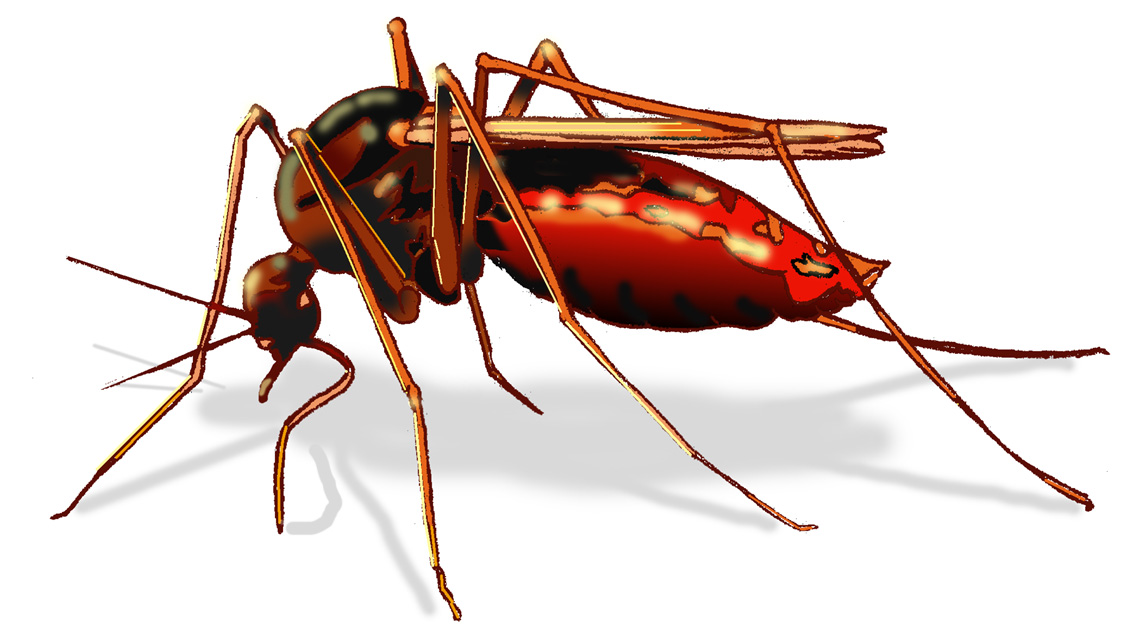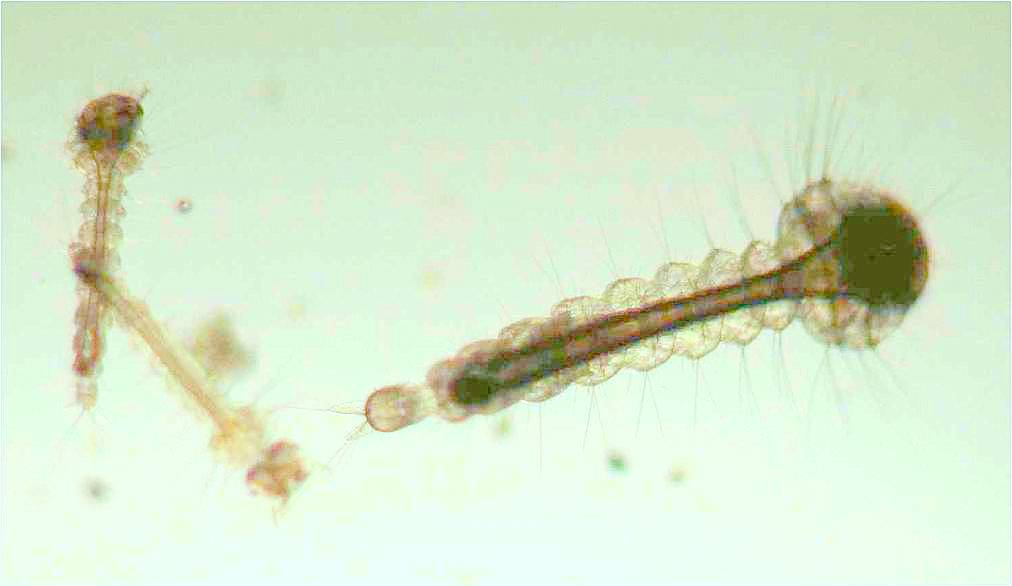About Mosquitoes
 To determine the source of mosquitoes, it is extremely helpful to understand their biology and how they breed.
To determine the source of mosquitoes, it is extremely helpful to understand their biology and how they breed.
Mosquitoes LOVE standing water
Mosquitoes commonly breed in standing water. Some in as little as a teaspoon or a bottle cap of water.
It can take as little as a week for mosquitoes to complete their lifecycle
Although it might seem like it, mosquitoes do not appear out of thin air. It takes a few days to a week for mosquitoes to complete their lifecycle from eggs to biting adults. Learn more about their lifecycle below.
Mosquitoes are not all the same
There are approximately 200 species of mosquitoes in the United States and approximately 50 species in Maryland. Different species of mosquitoes have different life histories and different behavior patterns. Some spread dangerous viruses while some don’t even bite humans. In Montgomery County, the three species we are most concerned with – from a public health perspective – are Culex pipiens (common house mosquito), Aedes albopictus (Asian Tiger Mosquito) and Aedes aegypti (Yellow Fever Mosquito).
Learn About Species of Concern
The distance mosquitoes will travel to feed depends on the species
According to the American Mosquito Control Association: "Mosquito species preferring to breed around the house, like the Asian Tiger Mosquito, have limited flight ranges of about 300 feet. Most species have flight ranges of 1-3 miles." The mosquito species of most concern in Montgomery County, such as the Asian Tiger Mosquito, have the shorter travel ranges.
Interesting facts about mosquitoes:
- Male mosquitoes do not bite. Only females!
- Like many other insects, mosquitoes feed on nectar. For some mosquito species, in order for a female mosquito to reproduce, she also requires a blood meal from humans or other animals. This blood meal contains the necessary proteins and iron that assist in egg development.
- Mosquitoes hibernate over winter. They are cold-blooded and prefer temperatures over 80 degrees. At temperatures less than 50 degrees, they shut down for the winter. The adult females of some species find holes where they wait for warmer weather, while others lay their eggs in freezing water and die. The eggs wait until temperatures rise to hatch.
- Mosquitoes find hosts by observing movement, detecting infra-red radiation from warm bodies, and by detecting carbon dioxide and sweat (chemicals octenol and lactic acid) from up to 100 feet away.
- Fish, frogs, dragonfly larvae and adults, as well as other aquatic insects are very effective predators of mosquitoes. Bats and purple martin birds are not as effective, because they do not eat very many mosquitoes in comparison to other flying insects.
Mosquito Lifecycle

Mosquito eggs are oval and about 0.635mm long and are either laid singly, on sides of containers, on leaves, or as an egg raft in water
 2-3 Days
2-3 Days

There are four developmental stages called instars and some species can grow to a 1/2 inch long. Larvae move through the water in a serpentine motion.
 5-6 Days
5-6 Days

About the size of a sesame seed. Pupae move in a somersault fashion through the water. They remain at the surface unless they are disturbed.
 2-3 Days
2-3 Days

Process begins again with a female adult mosquito collecting a blood meal (for protein) to lay her eggs. Adults typically live 2-3 weeks.
Aedes aegypti Mosquito life cycle
English [PDF – 2 pages]Spanish [PDF - 2 pages]

